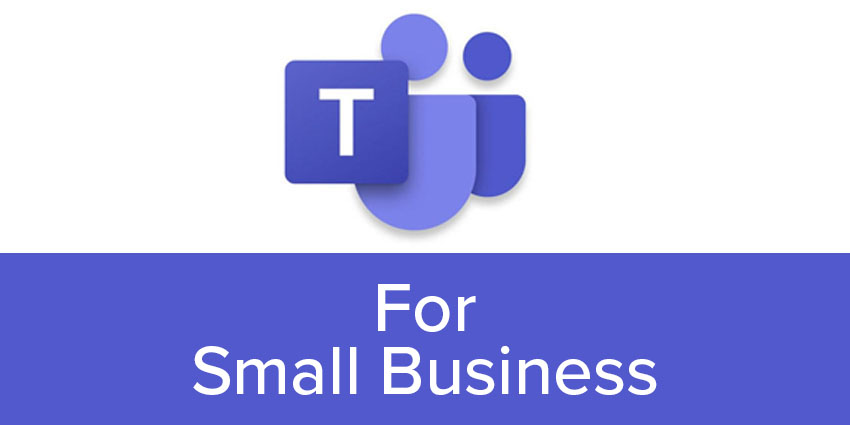Microsoft Teams is used by over 75 million DAUs around the world, and not every one of them belongs to a large organisation. In fact, small companies in retail, non-profit, F&B, etc. rely hugely on cloud-based collab apps (like Teams) that are easy to deploy and even easier to use.
Teams owe much of its popularity to its integration within the larger MS Windows ecosystem. With most customer-facing SMBs leveraging Windows systems, the Teams experience has a very short learning curve.
Last year, we spoke to Principal Solutions Architect, Tom Arbuthnot, on Microsoft Teams deployment for small businesses. Tom pointed out that businesses now operate on a 24/7 basis – especially given the rise of the freelancing model. While deploying Teams may seem daunting from outside, it offers several compelling benefits:
- It’s scalable – If you want to grow your SMB into something bigger, Teams has a solution for you. Or, if you want to stick to a basic Microsoft Teams Consumer Version, that’s okay too.
- It’s platform-agnostic – Despite its clear roots in the Windows family, Teams is compatible across Mac OS, Android, iOS, and even Linux. This gives you incredible flexibility when choosing infra.
- It integrates well – Microsoft Teams comes with 250+ handy app integrations, and that’s just the Teams Free edition. Its huge API library lets it work in any IT environment.
- It covers your basics – Microsoft Teams effectively replaces your email, video conferencing, telephony, and chat – along with integrations for shifts scheduling, billing, and more.
Now, due to the COVID-19 pandemic, more businesses are turning to digital connectivity than ever before. And this includes hundreds and thousands of small employers with a workforce of 100 or less.
5 steps to deploying Microsoft Teams at small businesses
Your Microsoft Teams deployment should be ready to take on your everyday use cases with minimal IT intervention. This is particularly true right now, when employees may not be able to physically contact It support to get their queries resolved.
Fortunately, a cloud-based Microsoft Teams deployment (not hybrid or on-premise) is capable of meeting most SMB requirements. Here are the steps for getting started:
- Prep your network for Teams
Your networked assets need configuring for Microsoft Teams readiness. So, if you already have a Microsoft 365 or Office 365 domain, or are using One Drive, SharePoint, and Exchange, make sure their configurations are up-to-date. For absolutely greenfield implementations, this step will naturally follow once you obtain your Microsoft 365 Business plan, which includes an advanced (paid) version of Teams.
- Get Teams licenses and install your clients
Teams licenses come in every shape and size, starting from a bare-bones Free version, to an extremely sophisticated Enterprise plan (E5), with specific plans for education, developers, and governments in between. We recommend that you opt for Microsoft 365 Business Basic + Business Voice, available at £15.80 per user per month. Business Voice lets you connect with a PSTN system, exponentially increasing Teams’ capabilities.
You can install Microsoft Teams clients, on desktop or mobile, while leveraging the browser interface for the on-the-go accessibility. Teams on Web has some limitations compared to its desktop client, so it is advisable to install both Teams Desktop as well as the mobile app.
- Create your first team and channel
A team is any group of people with something in common – for example, a restaurant could create a team for all customer-facing personnel. Within a team, you have channels for specific groups – like individual channels for waiters, restaurant managers, etc.
Microsoft suggests that your first team should be about getting to know the platform. This makes adoption easier, giving employees a hands-on space to iron out any queries. In this team, you can have separate channels for saying hello, asking how to queries, sharing feedback, or requesting support.
- Keep an eye on analytics
You (or whoever is assigned as the global admin) can view analytics reports from the Microsoft Teams admin centre. Here, you will be able to monitor usage, user activity trends, and device-specific details. This would indicate any issues in your Microsoft Teams deployment (e.g, not enough people are using the Teams mobile app due to lack of training).
- Upgrade your existing telephony system with Microsoft 365 Business Voice
Microsoft 365 Business Voice is a cloud-based phone system meant for SMBs. It connects your digital connectivity infrastructure to the public switched telephone network (PSTN). Its UK launch last year, made operations simpler for hundreds of companies, as they could now integrate PSTN and the typical VoIP calling on one platform.
Since April 2020, Microsoft Business Voice is available globally as an add-on to Teams and other Microsoft business apps.
Fortunately, Microsoft has included a Getting Started wizard with Business Voice to help small businesses deploy faster. The wizard will guide you through phone numbers, call menus, greetings, and other telephony details. For those who want to dig deeper, common customisations include:
- We’d recommend that you change your emergency address to keep it accurate and up to date – the wizard will help you through the process
- Business Voice gives you a new local phone number, but apart from this, you can port your existing numbers from the Teams admin centre
- Assign user licenses to your designated call host(s). This will keep your licensing costs to a minimum while giving all your employees telephony access.
- Upload an MP3 or WAV file of up to 5MB as your call greeting.
Microsoft Teams + Business Voice is a winning combination for SMBs. Some regions may have a Microsoft 365 Business Voice Without Calling Plan option available, but we’d still suggest that you go down the calling plan route as it comes with toll-free dialling as well as international calling.
Plans go up to £27.10, which covers business tools like Microsoft Bookings, Shifts, and MileIQ.
But for organisations looking to get started, the base tier of Microsoft 365 Business Basic + Business Voice offers a strong enough foundation for centralised communication, integration with third-party apps, and quick deployment for always-on connectivity.







